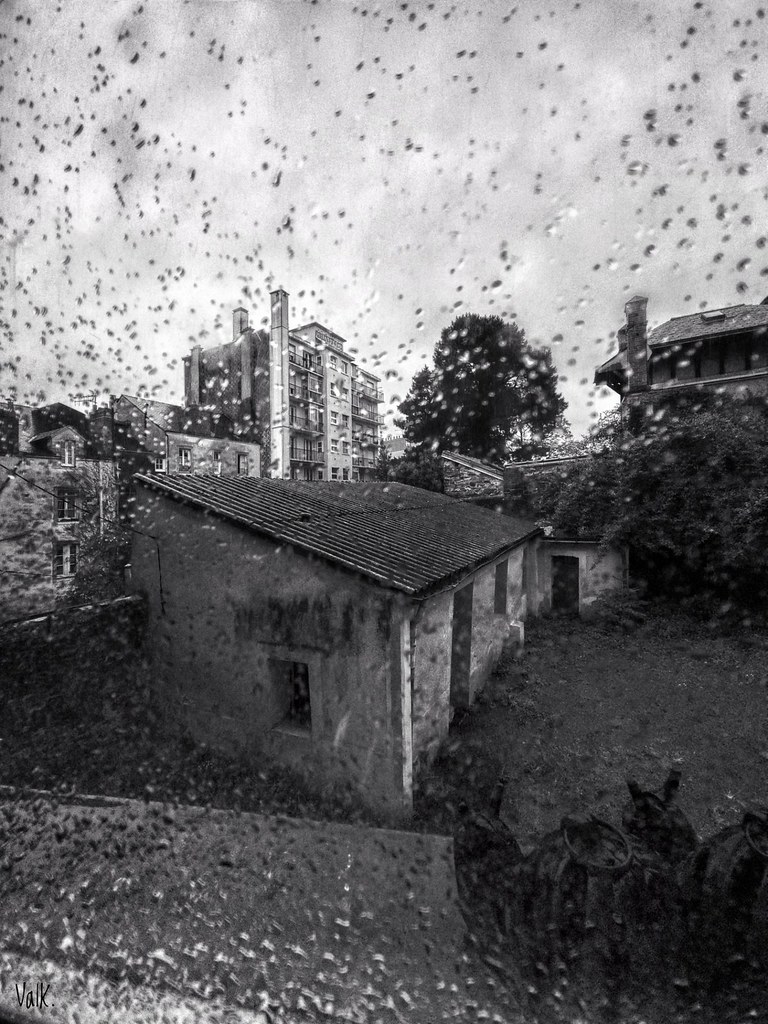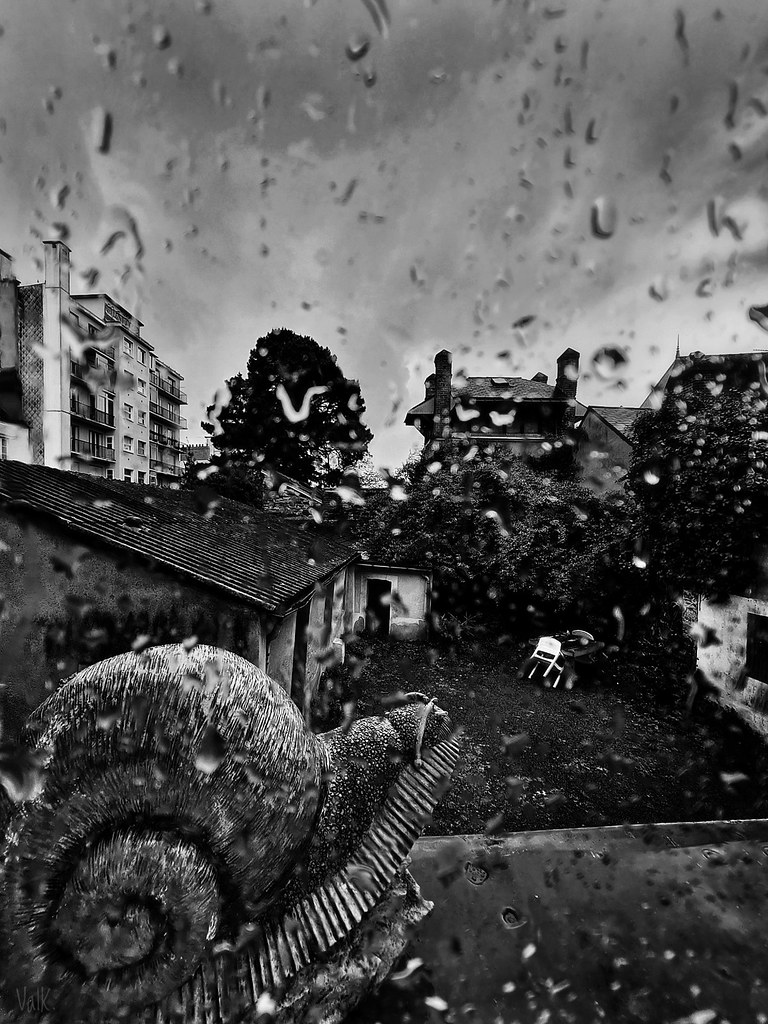Ethiopia’s population has tripled over the past few decades. Millions of farmers are leaving the fields only to end up living in the slums of huge cities. City planners believe they have found a solution — in the remote countryside.
Stories about people embarking on their future usually start with a departure. But the story of farmer Birhan Abegaz is different. He plans to stay put right where he is in his quest for happiness — a treeless wasteland in northern Ethiopia.
The crooked huts of his village, Bura, are surrounded by solitary thorn bushes and acacias. Birhan is cultivating rice on a patch of leased land behind his hut, at least during the rainy season. A few months have passed since the harvest. The dry season is here, and the earth is dusty. The Shine River, Bura’s lifeblood, is nothing but a trickle.
Married with three children, Birhan is only 28 years old, but the hardness of rural life has taken its toll on him and he looks much older. He fetches the family’s water for drinking, cooking and washing from about a kilometer away. The nearest well is on the other side of the highway leading to the provincial capital of Bahir Dar, a two-hour drive away. In the past, many people from Bura and the nearby villages took this road, turning their backs on the countryside in search of a better life in the city.
What Can Keep the Farmers in the Countryside?
Since the 1970s, Ethiopia’s population has more than tripled, going from 30 million to over 100 million. In the countryside, overpopulation is leading to the overuse and overgrazing of fields and deforestation. More and more people are moving to the big cities, which are growing faster than the rest of the country. The provincial capital of Bahir Dar had about 60,000 inhabitants 30 years ago, but today it has 350,000. “Apartment buildings, streets, the drinking-water supply and the entire infrastructure can’t keep up with this tempo,” says Ethiopian city planner and architect Zegeye Cherenet.
As a result, new arrivals end up living on the streets or in slums. In the early mornings in Bahir Dar, dozens of ragged young men stand at the intersections in the hope of picking up work as day laborers. In the evenings, their sisters and mothers go to the square and wait for johns.
That’s supposed to change now, and the starting point is to be the barren wasteland next to the village of Bura. Birhan points to a construction site next to the highway. His new house is being built there, constructed out of eucalyptus wood and clay bricks. It’s supposed to be the first of many. An entire town is to be built here — with a school and a training center where the farmers from the surrounding area can learn new skills, which they can then put to use to earn money. The newly founded municipality, which is to gradually grow to around 15,000 residents, is called Buranest. The idea behind the project is that the city must come to the farmers in order to keep the rural population from flooding into the cities.
The project is called Nestown, short for New Sustainable Town. The plan was primarily devised by Franz Oswald, a former professor at ETH in Zurich, and sociologist Dieter Läpple, the doctoral supervisor of Ethiopian city planner Cherenet at Hafencity University in Hamburg.
Urbanization without Rural Depopulation
An entire network of this new type of settlement is to be built as part of Ethiopia’s Nestown project — half village, half town. The inhabitants are to form cooperatives to build and run their towns themselves, as well as to make and sell agricultural and handcrafted wares. “The residents can remain farmers, which is familiar to them, but also simultaneously learn urban skills,” says Cherenet. Rural towns like Buranest are meant to keep the people in the countryside by offering them local opportunities like the ones they are moving to overpopulated cities to search for in vain.
Work on the project began five years ago. First, model houses were built to show the skeptical farmers how useful it can be to have stable foundation walls, cisterns and toilets. The region’s usual dwellings are huts made of twigs, mud and cow dung — crooked housing often described as “dancing houses.”
Birhan proudly opens the hatch of his cistern. He dug the pit for it together with his new neighbors. His home is also almost complete, a kind of row house that shares a large corrugated iron roof with the adjacent buildings. During the rainy season, the rainwater will drain into the cisterns using constructions called Rain Water Units (RWU). “With the water I can have not just one harvest per year, but several,” he says. A garden is being planted behind the house and his five cows “will even get their own shed.” Earlier, the animals lived in the old hut, under the same roof as the family.
The construction style is unconventional for the region: The houses are two stories high, with a family housed on each floor in order to take up as little land as possible. Fertile land is valuable. One-half of a row house costs 75,000 Ethiopian birr, or about 2,200 euros, which is being financed partly through loans and partly with donations.
The River Flows All Year Round
The training center has been built on the village square — a building with cheerful red and green walls. The farmers will learn how to process food here, as well as household management and the basics of accounting. Their children are to take computer courses. Like his neighbors, however, Birhan has never been to school and doesn’t know how to read or write.
A school, health center and church are to be built in the next construction phases — all largely by the new inhabitants. Swiss aid organization Green Ethiopia has planted a large vegetable garden as well as trees on the streets and along the banks of the Shine. For the first time in decades, the river is now flowing all year round.
The rapid population growth has also left scars on the area surrounding Birhan’s village, Bura. The source region of the Shine River, 20 kilometers away, had been deforested, the fertile soil carried away by wind and storms. Since 2012, Green Ethiopia has planted almost 3 million trees on the hills of Lobokemkem. The organization also pays the local farmers to stop grazing their animals there.
After five years, the successes are visible: The trees reach up to 5 meters high and a thin layer of topsoil has formed, with grass growing on top of it. Tree and grass roots hold down the soil. At several spots, the groundwater trickles out even in the dry season, which hasn’t been the case in two generations. Downriver, in Bunarest, there is enough water for the new gardens despite the drought. They are one of the most important foundations for the further development of the town. “What must I do to build a city? First, I plant a forest,” says Franz Oswald, summing up the seemingly paradoxical principle.
The tree nursery is also part of the project. People from the region work here and raise the trees that are to be planted in Buranest.
The Biggest Obstacle: Neighbors’ Skepticism
Birhan Abegaz is already planning his transition away from farming to a life as an urban dweller. If one day he manages to get more land, he wants to plant more vegetables “and then open a restaurant,” he says. His family could work there. He hopes that his kids “can learn and have better career options. They shouldn’t remain farmers like me.”
But his patience is repeatedly being put to the test. As a future urban dweller, he is dependent on the developments taking place around him. He is reliant on his neighbors. His house, as well as the first general construction phase, was supposed to be finished last year. The date has been pushed back repeatedly.
It should be ready soon, but it’s hard to make predictions in Ethiopia. The cooperative of carpenters and stone masons, which was founded and trained specifically for the construction of the residential buildings, had to be dissolved again because as soon as they had their diploma, many of the trained tradespeople disappeared to find their luck in Bahir Dar or elsewhere. As a result, the construction site remained quiet for a year. The training center with the red-green exterior wall may be finished, but it remains empty because the local authorities are unable to agree on who will pay the instructors.
Growth is nevertheless happening in Buranest, though not along the banks of the Shine where the planners had initially intended. The actual new town center has developed to the left and right sides of the highway. A kiosk has opened there, as well as a bar. About 300 people have built their traditional “dancing houses” there out of mud and twigs. Buranest, a city under construction, has attracted them from the surrounding villages, but most are still hesitating to sign onto the project. They shun the 40-euro fee for joining the cooperative, and an urban life with electricity and toilets in little sheds in front of the houses still seems alien and unfamiliar.
The Government Wants to Build Thousands of New Towns
Although the new settlement isn’t growing according to the Buranest planners’ intentions, they aren’t too bothered by it. The fact that so much is being built informally, says Dieter Läpple, is a sign that the people believe in the settlement’s future. He now hopes for what the founders call the “propaganda of the good deed” — that once families have moved into their new homes with water and gardens, neighbors will also soon recognize the advantages. The decisive factor, Läpple says, will be whether “the population makes the project theirs.”
The government in Addis Ababa is already on board. In the city of 5 million, up to 80 percent of residents live in slums, according to UN estimates. And although migration into cities and urbanization used to be considered taboo, that’s no longer the case. By 2020, the Ethiopian Ministry of Urban Development and Housing wants to turn 8,000 rural settlements into “urban centers.” The government already has a concrete role model for their plans: Buranest.



















































